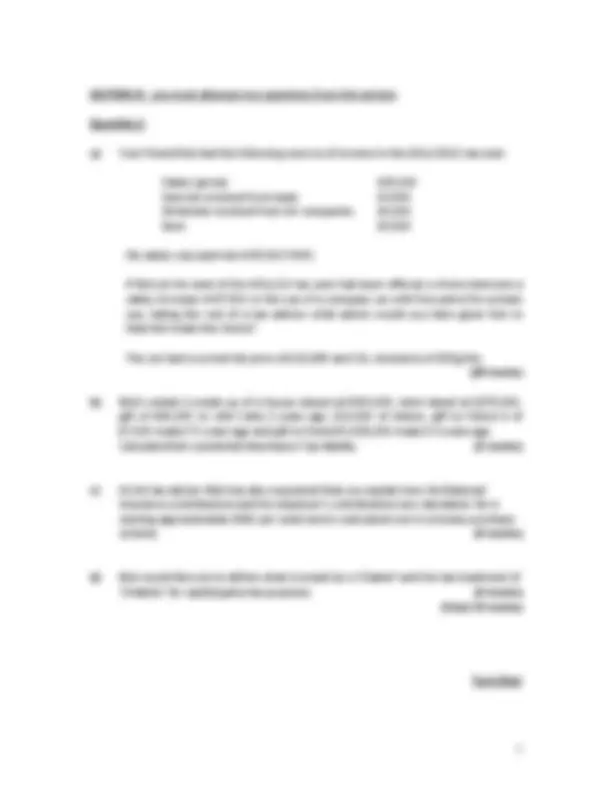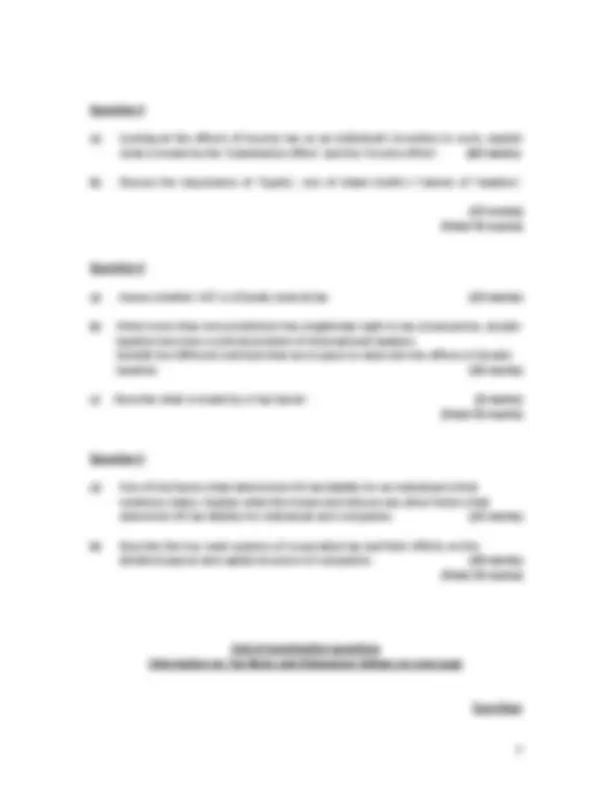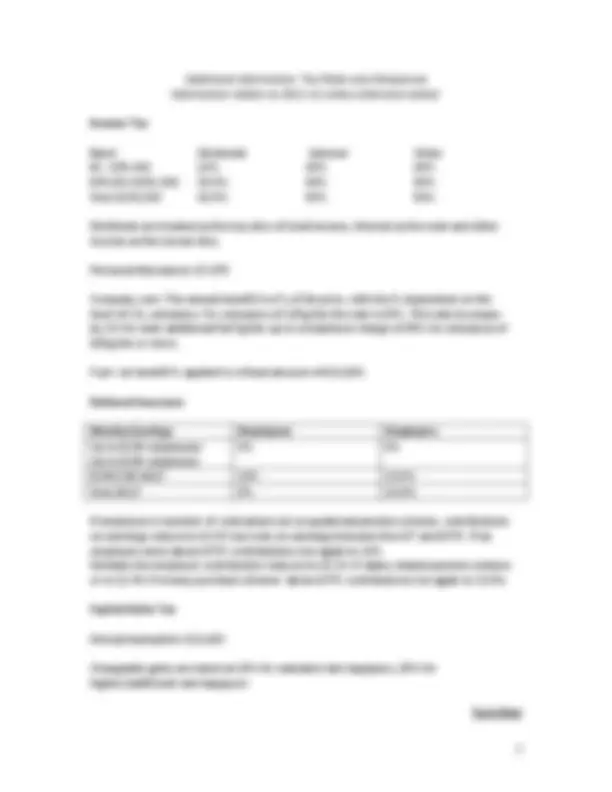





Study with the several resources on Docsity

Earn points by helping other students or get them with a premium plan


Prepare for your exams
Study with the several resources on Docsity

Earn points to download
Earn points by helping other students or get them with a premium plan
Community
Ask the community for help and clear up your study doubts
Discover the best universities in your country according to Docsity users
Free resources
Download our free guides on studying techniques, anxiety management strategies, and thesis advice from Docsity tutors
A taxation examination paper from january 2012. It includes questions related to corporation tax liability, direct taxes, vat, national insurance contributions, and capital gains tax. The paper consists of two sections, with the first section containing a compulsory question worth 34 marks and the second section containing optional questions worth a maximum of 33 marks each. The document also provides additional information on tax rates and allowances.
Typology: Exams
1 / 6

This page cannot be seen from the preview
Don't miss anything!




Ionawr 2012 January 2012
Time allowed: THREE hours
This paper consists of two sections,
You must answer the compulsory question in section A and two questions from Section B.
In Section A the question is worth a maximum of 34 marks.
In Section B each question is worth a maximum of 33 marks
Casio FX83ES/GT or FX85ES/GT calculators only may be used.
Turn Over
SECTION A This question is compulsory
Question 1
a) In order to calculate their corporation tax liability Polly plc has provided you with the following information in relation to the year ended 31 st^ March 2011 (all figures in £M unless stated as percentages):
Loss before tax 5. Dividend received from UK subsidiary 8 Dividend received from non-UK subsidiary 10 Corporation tax rate applying to UK subsidiary 26% Corporation tax rate applying to non-UK subsidiary 35% Gross interest received on long-term deposit 5. Net book value of plant and machinery at 31 st^ March 2011 87 General bad debt provision increase 3 Deprecation rate on fixed assets (reducing balance method) 20% Net purchase of plant and machinery in year ending 31st^ March 201 1 14 Percentage of net purchases of fixed assets qualifying for capital allowances 65% Tax written down value of qualifying expenditure at 1st^ April 20 10 50 Unutilised Schedule D Case 1 losses at 1 st^ April 2010 9 Capital allowance plant and machinery writing down allowance 20%
From the information given above calculate Polly plc’s corporation tax liability for the year ended 31 st^ March 2011. (20 marks)
b) Corporation Tax is an example of a direct, progressive, current tax. Explain what each classification means and its implications. (6 marks)
c) ‘The direct tax cost of VAT is borne by the final consumer’. Using a numerical example show what is meant by the above statement. (8 marks) (Total 34 marks)
Turn over
Question 3
a) Looking at the effects of income tax on an individual’s incentive to work, explain what is meant by the ‘Substitution effect’ and the ‘Income effect’. (20 marks)
b) Discuss the importance of ‘Equity’, one of Adam Smith’s ‘Canons of Taxation.’
(13 marks) (Total 33 marks)
Question 4
a) Assess whether VAT is a fiscally neutral tax. (14 marks)
b) When more than one jurisdiction has a legitimate right to tax a transaction, double taxation becomes a central problem of international taxation. Identify the different methods that are in place to deal with the effects of double taxation. (16 marks)
c) Describe what is meant by a ‘tax haven’. (3 marks) (Total 33 marks)
Question 5
a) One of the factors that determines UK tax liability for an individual is their residence status. Explain what this means and discuss any other factors that determine UK tax liability for individuals and companies. (15 marks)
b) Describe the two main systems of corporation tax and their effects on the dividend payout and capital structure of companies. (18 marks) (Total 33 marks)
End of examination questions Information on Tax Rates and Allowances follows on next page
Turn Over
Additional information: Tax Rates and Allowances Information relates to 2011-12 unless otherwise stated.
Income Tax
Band Dividends Interest Other £0 - £35,000 10% 20% 20% £35,001-£150,000 32.5% 40% 40% Over £150,000 42.5% 50% 50%
Dividends are treated as the top slice of total income, interest as the next and other income as the lowest slice.
Personal Allowances: £7,
Company cars- The annual benefit is a % of list price, with the % dependent on the level of CO 2 emissions. For emissions of 125g/km the rate is 15%. This rate increases by 1% for each additional full 5g/km up to a maximum charge of 35% for emissions of 225g/km or more.
Fuel- car benefit % applied to a fixed amount of £18,800.
National Insurance
Weekly Earnings Employees Employers Up to £139-employees Up to £136-employers
Over £817 2% 13.8%
If employee is member of contracted out occupational pension scheme, contributions on earnings reduce to 10.4% but only on earnings between the LET and £770. If an employee earns above £770 contributions rise again to 12%. Similarly the employer contribution reduces to 10.1% if salary related pension scheme or to 12.4% if money purchase scheme- above £770 contributions rise again to 13.8%.
Capital Gains Tax
Annual exemption: £10,
Chargeable gains are taxed at 18% for standard rate taxpayers, 28% for higher/additional rate taxpayers
Turn Over